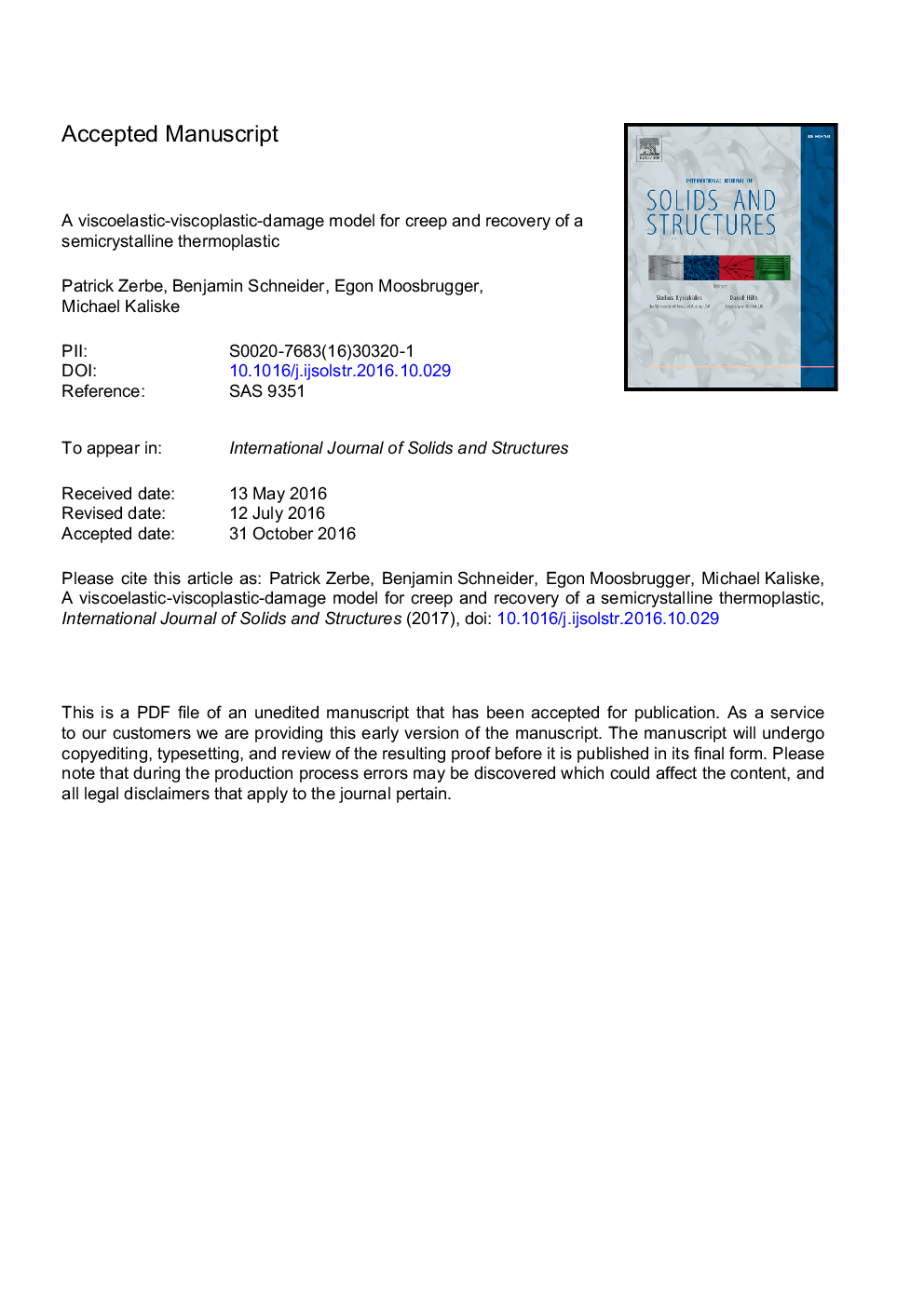| Article ID | Journal | Published Year | Pages | File Type |
|---|---|---|---|---|
| 4922519 | International Journal of Solids and Structures | 2017 | 26 Pages |
Abstract
Thermoplastics subjected to static mechanical loads tend to creep, i.e., deform with respect to time. Motivated by creep experiments, a finite strain material model is proposed. The approach models recoverable and irrecoverable deformations through viscoelastic and viscoplastic contributions, respectively. The viscoelasticity is based on a generalized Maxwell model and the viscoplastic component has a quadratic pressure-dependent flow potential and a typical creep viscosity function. An isotropic damage formulation models the degradation of material properties with respect to time. However, a newly proposed recovery variable hinders the damage evolution especially in long-term processes. A reduced predictor-corrector scheme is presented for an efficient solution of the implicit numerical integration of the model in the context of Finite Element calculations. Creep experiments with constant load and cyclic loading-unloading are shown to characterize the mechanical long-term behavior of polyoxymethylene, a semicrystalline thermoplastic. Finite Element calculations of the experiments with the proposed material model demonstrate its capability to model the long-term deformation behavior of polyoxymethylene.
Keywords
Related Topics
Physical Sciences and Engineering
Engineering
Civil and Structural Engineering
Authors
Patrick Zerbe, Benjamin Schneider, Egon Moosbrugger, Michael Kaliske,
